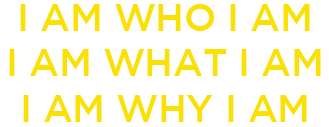
03 Oct Koan 125
“He who speaks does not know, he who knows does not speak.”
— Lao Tzu
What is there to know?
What is there to know!
What is every thing before it is what it is whatever it is in the now.
What is nothing and potentially every thing.
He who speaks does not know what, as what is beyond description.
He who speaks is conscious of the now.
He who knows is consciousness, the creator of the now from the infinite possibilities before the now. He does not speak, as speaking is only one of the infinite possibilities.
He who speaks describes independent things.
He who knows does not speak, for there are no things; just the flow of the universe.
He who speaks is the now. Yet, he does not know the now, as a hand cannot grasp itself.
He who knows does not speak, for the now can only be known by silently observing it outside the now.
He who speaks is the self. The self does not know the oneness of ultimate reality (the soul), for the self perceives itself as separate from all that is not the self.
He who knows is the soul. The soul cannot speak, for speaking is consciousness separating ultimate reality.
He who speaks knows the world but not the universe.
He who does not speak is the universe.
He who speaks is certain of what he speaks.
He who knows does not speak, for nothing is certain.
He who speaks does not know what’s said is rarely what’s heard.
He who knows does not speak, for speaking is futile.
He who speaks explains what he sees and hears.
He who knows does not speak, for the nose knows and smells are ineffable.
He who speaks does not know what he sees is only foveal vision: 1% of peripheral vision.
He who knows does not speak, as what’s in peripheral vision is too vague to described specifically.
He who speaks does not know he is only describing an individual dot in a painting.
He who knows does not speak, for he knows a painting is an infinite number of interdependent dots.
He who speaks does not know the now he describes is now no longer.
He who knows does not speak as what’s no longer is an illusion.
He who speaks thinks, as effects come from affects, things can be explained.
He who knows does not speak, for he knows the universe is spontaneously manifesting.
He who speaks thinks life is a divine joke whose subtleties can be discussed.
He who knows does not speak, as a joke that needs to be explained is not funny.
He who speaks is an actor in the play of life.
He who knows is the audience.
The actors speak of matters they take seriously.
The audience knows it’s a play, not to be taken seriously.
They do not speak, for they are forever laughing
A speaker’s words are like the finite and precise space inside a square.
The endless and everchanging now is like the imprecise space inside a circle.
He who knows does not speak, for a circle cannot be squared.

